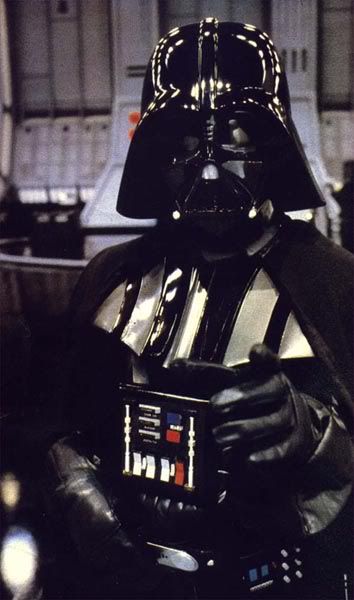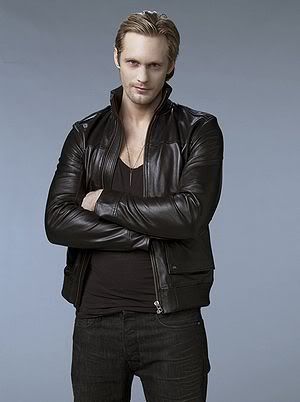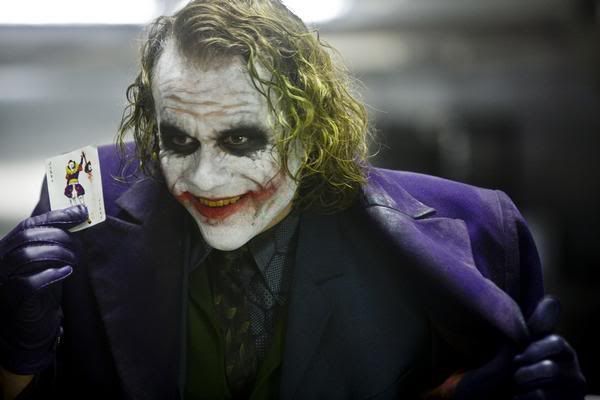Russ Pitts’ triumphant return as an Escapist columnist prompted me to finally lay down some thoughts on villainy. A little roleplaying in World of Warcraft on my characters reminded me how much fun it can be to write for or portray a villain. My brother-in-law, when running Dungeons & Dragons is described as “an evil DM,” always bringing out the malevolence in his NPCs so that the player characters in his campaigns are always motivated to dispense a little adventurous justice. My father’s an attorney. I’m surrounded by villainy.
There are all sorts of villains, however, and every one of them sees themselves more or less in a positive light, if not convinced that they are the hero. Let’s stay with the D&D theme for a few archetypal examples.
Lawful Evil

Some villains actually try to uphold the law. Sure, the laws might be corrupt or warped in some way, but it’s still a structure for peace and order. Police states can be peaceful, after all.
There are also villains who have a personal code of honor they will not violate under any circumstances. “No women, no kids,” for example. Sometimes they verge a bit into anti-hero territory, but for the most part, these villains don’t pursue villainy for its own sake – they pursue the law, or justice, as they see it.
Take Darth Vader. For the most part, when he is Darth Vader, he’s hunting down terrorists and insurgents, trying to stop a full-on rebellion against the established government. His methods are somewhat draconian and he isn’t one to compromise or even show remorse, but he’s pursing a noble end in the eyes of the Empire’s creators.
Neutral Evil

Some people are motivated selfishly. They want what they want, and that’s it. Some are compromised in the pursuit of their desires by their morals or ethics, or the restrictions of society’s laws. Others… not so much. They’re seen as villains, but in their own minds, they’re just getting what they want.
Not quite as unpredictable as the upcoming alignment, but not as restricted as their lawful cousins, neutral evil characters are wild cards. They’re often as charismatic as they are ruthless, as fun to be around as they are chillingly dominant. They strive to be masters of their domain, and really could care less about things that aren’t the things that they want.
Look no further than Eric Northman of HBO’s True Blood for a fantastic example of both a Neutral Evil character who’s also a Magnificent Bastard. Even when he’s acting his most vampiric, speaking in cold, dispassionate tones about human beings like they’re slabs of meat, there’s something of a twinkle in his eye, the occasional twitch of his mouth that reaches for a smirk. We do see other sides of him, especially when it comes to his Maker, but for the most part he’s about as evil as Neutral Evil can get.
Chaotic Evil

You have villains who pursue the law or their own code of honor for the sake of those laws or that code. You have villains who just want what they feel is coming to them, even if they have to lie, cheat, or murder to get it. And then you have these guys.
Chaotic Evil villains aren’t necessarily crazy. They might, however, string you up by your nostril hairs and slap you around with meter-long pieces of rebar if you call them crazy. No, Chaotic Evil villains are motivated by a desire to destroy everything they see so something new can be built up in its place. Or perhaps they’ve had a vision of Hell coming to Earth to shake the complacent religious types out of their stupor and give them something worth fighting for if their faith is, indeed, true. They have a goal in mind, but the path to that goal isn’t exactly mapped out. If it were, the map would be covered in squiggles of blood and crayon. They may believe what they’re doing will ultimately benefit the world, in some way shape or form, but for the most part? They just do things.
Which brings me to the late Heath Ledger’s Joker. Cesar Romero, Jack Nicholson and Mark Hamill have all taken turns playing Batman’s favorite monstrous clown, but Heath & Dark Knight director Christopher Nolan took the insanity to a whole new level. By removing some of the more ridiculous trappings of the character and focusing on his anarchistic mindset, the Joker came across as a true agent of chaos. He wanted to show people what he felt was their true nature. His goal was to bring down the carefully-crafted artifices of civility and organization some used to hide their deepest desires. He lived out loud, which is something any artist should want to do, but did it in a very violent and very infectious way. It affected everybody around him, as he probably knew it would. He just didn’t know how. Nor did he know for certain what he’d do next – just that something needed doing.
Name some of your favorite bad guys. Where do you think they fall? How do you think they see themselves? And how might their villainy be perceived as heroism by some? Food for thought.



July 15, 2010 at 5:16 pm
food stuff. My charecters are never villians or heros. Both is more interesting. Espescially these days people live vicariously through villianous action. Erik Northman is by far the most interesting and popular charecter for that reason as was Darth Vader.